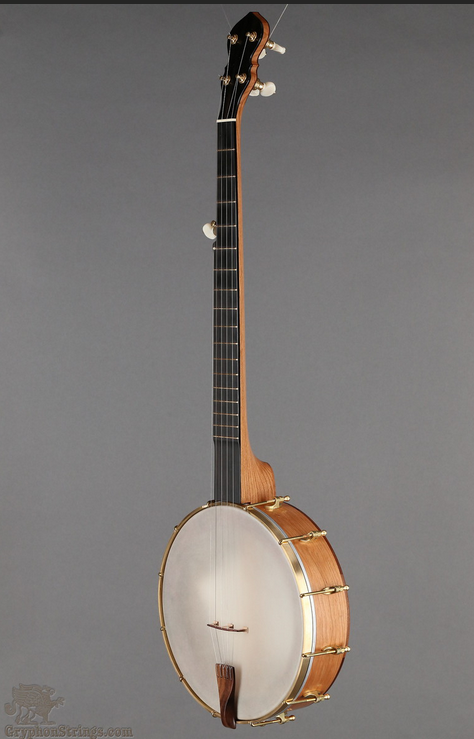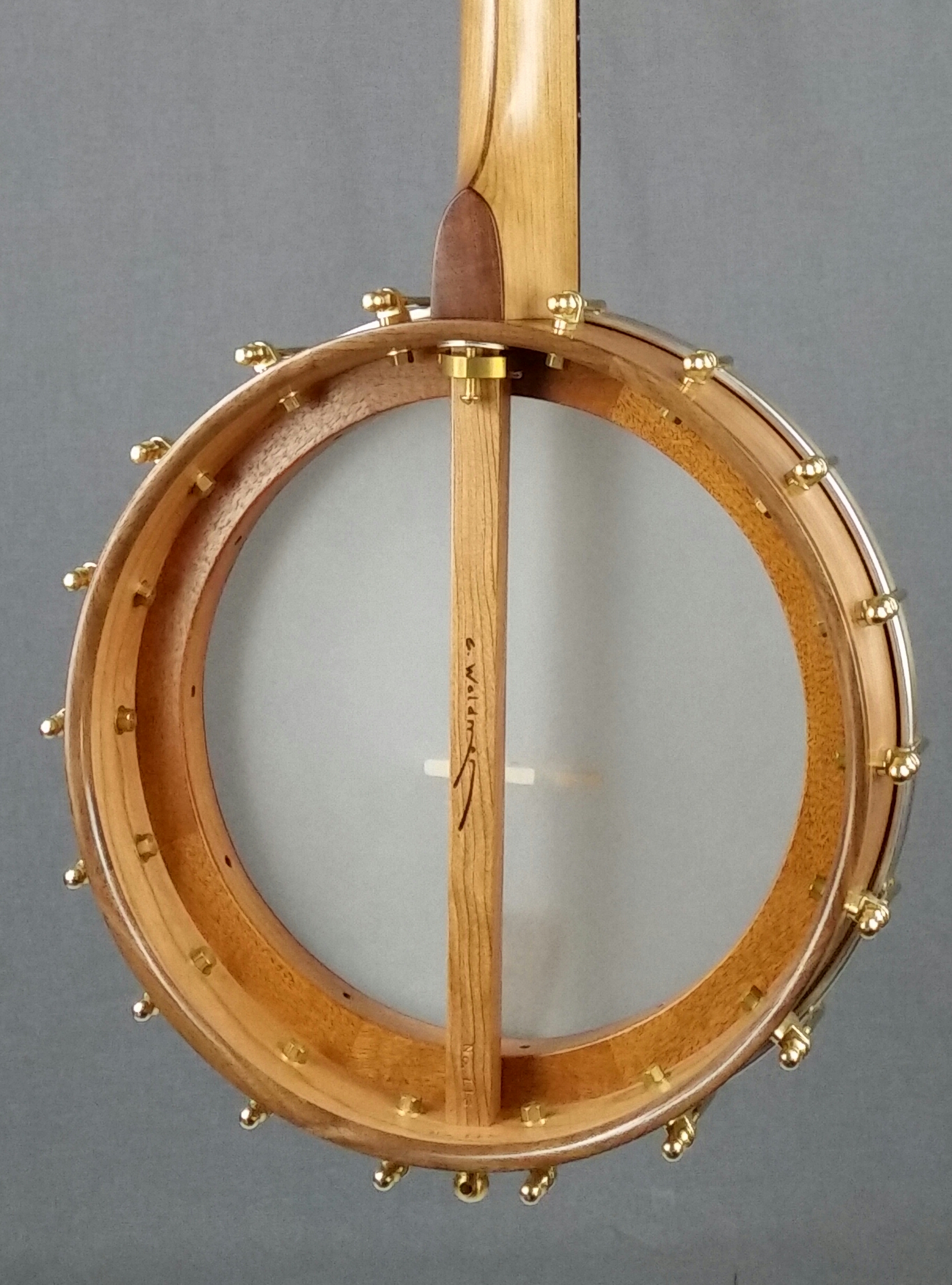Wood-O-Phone Banjo

My idea to build a different tone chambered banjo rim started in 2003. I hadn’t built banjos in 30 years but had continued to play Old Time and at a local dance.
My banjo at the time was a Whyte Laydie style and I was looking for something with a deeper more resonant lower end, sweet trebles but keep the power of the Whyte Laydie. After a few attempts, I arrived at some early versions of the Wood-o-Phone.
The heart of the Wood-o-Phone is an internal wooden tube encircling the inside of the rim just under the head. This tube is divided by wooden partitions into a number different length chambers; each with 1 or 2 holes. The earlier models had 2 sets of these going circling in opposite directions and meeting in the middle across the rim. Each chamber decreased in size by 20% as they progressed around. I used tone woods as in a guitar: mahogany or spruce for the bottom and back and side woods (bubinga, mahogany, walnut, bloodwood, padauk, purple heart or black acacia) for the top. The top was coved to create a tone ring.
Last fall, I started to find some dissonant notes here and there and re-designed the chamber system. I size them  relative to each other using the ‘rule of eighteenths’; same as the chromatic fret scale. This is based on the scale length for that instrument. I also decreased the width and depth of the chambers a bit to get a little clearer tone.
relative to each other using the ‘rule of eighteenths’; same as the chromatic fret scale. This is based on the scale length for that instrument. I also decreased the width and depth of the chambers a bit to get a little clearer tone.